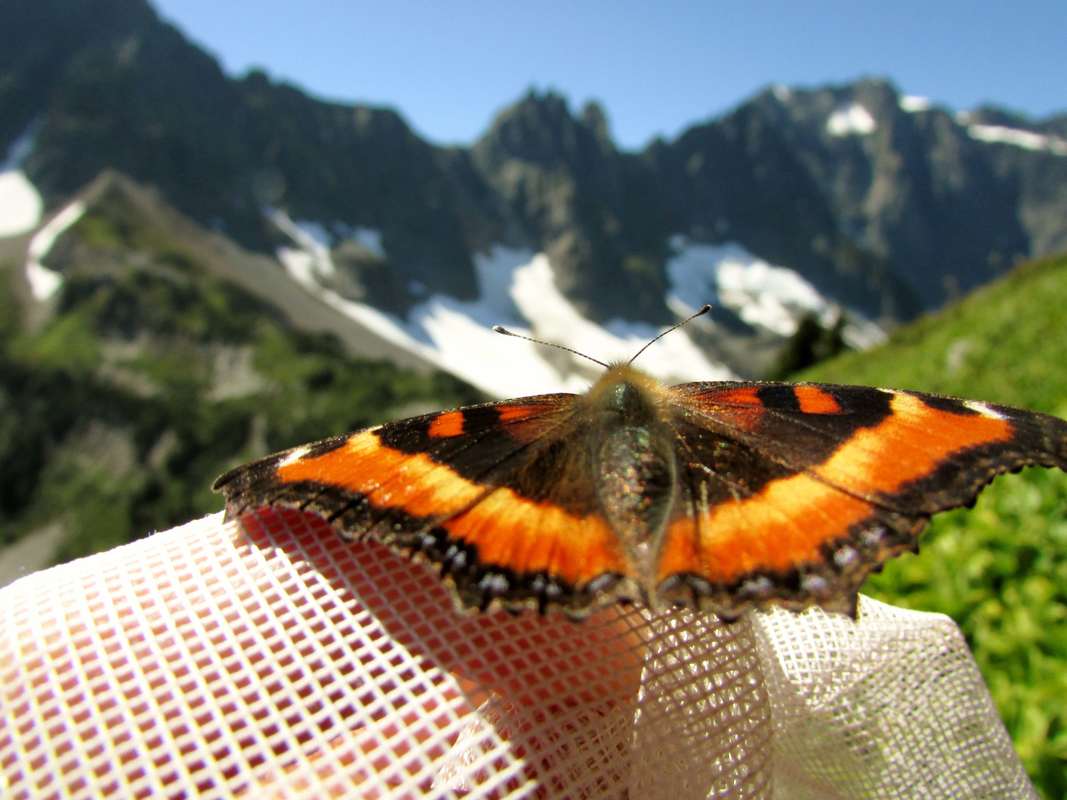By: Michelle Toshack
How robust are butterfly populations in wilderness areas? What management strategies can be adopted to address the conservation of these species? These are some of the questions that Adventure Scientists is tackling with our
Conserving Biodiversity – Pollinators project. We’ve pulled together four peer-reviewed articles* that helped us understand how to best approach this effort. They serve as important background reading on current issues around butterfly conservation.

Milbert’s Tortoiseshell, PC Michelle Toshack/NPS
Phenology Asynchrony in Plant-Butterfly Interactions Associated with Climate: a Community-Wide Perspective. 2016. Isabel Donoso, Constantí Stefanescu, Alejandro Martínez-Abraín and Anna Traveset. Oikos.
This article investigates timing mismatch between butterfly emergence and their host plants in the Mediterranean. They looked at the different factors that may affect this mismatch, such as aridity and temperature. Many butterfly species, including both generalists and specialists, are vulnerable to phenology mismatch. This will continue to have an impact on butterfly populations in the face of environmental change.

| donoso_et_al-2016-oikos_1_.pdf |
| File Size: |
1602 kb |
| File Type: |
pdf |
Download File
Can Butterflies Evade Fire? Pupa Location and Heat Tolerance in Fire Prone Habitats of Florida. 2015.
Matthew D. Thom, Jaret C. Daniels, Leda N. Kobziar, Jonathan R. Colburn. Plos One.
Understanding how butterflies respond to fire is important for managing prescribed burns. This experiment analyzed how butterfly chrysalides survive at different soil depths. Some species may be more impacted by low-intensity burns than others, so it is important to plan prescribed burns to minimizes negative impacts to butterfly species of conservation concerns.

| thom_et_al-2015-plosone.pdf |
| File Size: |
1539 kb |
| File Type: |
pdf |
Download File
Monarch (Danaus plexippus L. Nymphalidae) migration, nectar resources and fire regimes in the Ouachita Mountains of Arkansas. 2006. D. Craig Rudolph, Charles A. Ely, Richard R. Schaefer, J. Howard Williamson, and Ronald E. Thil. Journal of the Lepidopterists’ Society.
Fire suppression has altered forest structures, reducing nectar resources for migrating monarchs. This article investigates sites that have been restored using prescribed burning, which in turn benefits migrating monarchs.

| rudolph_et_al-2006.pdf |
| File Size: |
405 kb |
| File Type: |
pdf |
Download File
Climate variability and change in high elevation regions: past, present and future. 2003. Henry F. Diaz, Martin Grosjean, and Lisa Graumlich. Climatic Change.
Mountainous regions are sensitive to climate change, and this article explores the importance of conserving high-elevation environments. Mountains are highly diverse and rich ecosystems, yet vulnerable to natural risks, disasters, and environmental changes. Conducting research in mountain ecosystems is important for providing critical insights into understanding climate variability and its impacts.

| diaz_et_al-2003.pdf |
| File Size: |
46 kb |
| File Type: |
pdf |
Download File
*The authors have granted Adventure Scientists permission to share these articles.

